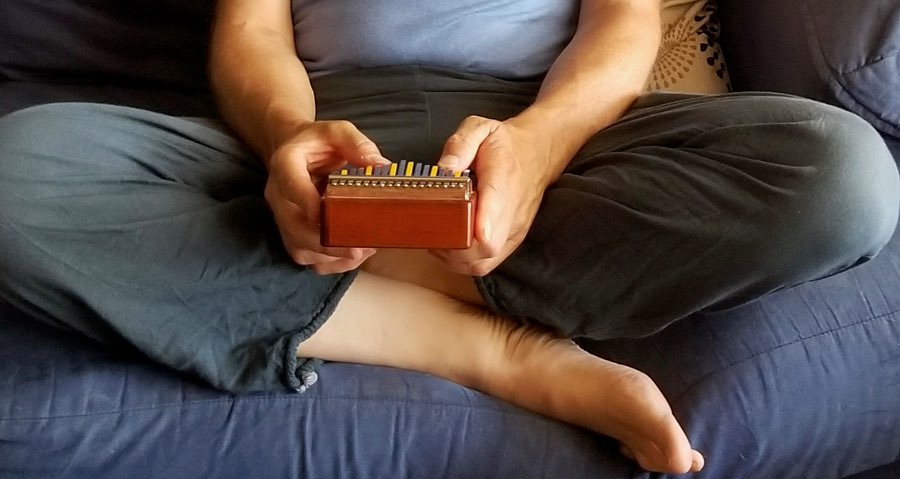There are many ways to cultivate your kalimba in your life. I find that most people do like a component of mindfulness or spirituality in their kalimba journey. Here are some gems from my practice that I would like to share with you.

Let your kalimba playing be a channel into “The Now”. Be present to Now by paying attention to the kalimba, the sounds it makes, the logic of the music, or how it makes you feel.
In the warble of a simple kalimba note, struck by your thumb, ringing, sustaining, and dying… is a focus for meditation.
Pretend your kalimba is in the hands of a great master – let them play just a short phrase of music, through you, on your kalimba. What do they have to show you?! They pause, letting you jump in, repeating the music the master just played. Go back and forth, from the master’s phrase, to your repeat of the master’s phrase.
An important aspect of this, seen through the lens of mindfulness: can you remember the first phrase well enough to repeat it more or less precisely?
Realistically, all kalimba music has elements of both. The impish playfulness, the joy that comes here and there from experiencing unexpected beauty. But also the mindfulness that is able to dissect the music, to understand it, to direct it, or transfer the notes from tablature… slowly… onto your own thumbs and your own kalimba.
Practice and study have their own tempo – starting very slow, and gradually accelerating as sureness is achieved through repetition. Playfulness and joy also have their own tempo. It is often faster. And it probably doesn’t repeat as precisely either.
The kalimba is a powerful tool to help us work toward unity of divergent elements. Consider the history of the kalimba. It is based on an African marimba that was played by two people, one on each side of the instrument, each player playing interlocking patterns with the other. Now, the kalimba is an encapsulation of that whole scene: left thumb plays one marimba player’s part; right thumb plays the other marimba player’s part… but the kalimba player can walk away with his or her instrument, while the marimba and two players are kind of stuck.
Think of the kalimba as a theater where Left and Right can come together and make a beautiful unity. I like to think of this as a fairy tale about being able to work with people who are different from me. Surely, if I could make great music with someone else, I would be able to appreciate something of them, and they would appreciate something of me? Surely, that is the beginning of truly working together?
And even if the only bridge you create is the one joining your right brain and your left brain, it is a worthy journey.
That, really, is the subject of everything that goes on at Kalimba Magic. Each lesson, each song, each book, is a multi-dimensional exploration of how right and left work together. Look around.
For starters: focus on playing the Left notes. You can still play some notes with the right, but put your consciousness into your left thumb. Try to understand the left. How does the left thumb feel, to be playing those notes? What role does your left thumb like to play? And do the same with the right.
Can you come to understand within yourself, how your left likes to be, and how your right likes to be? You have two different personalities within you, left and right, that stereoscopically project to make the three dimensional person that you are. Kalimba can help you in this journey of self-discovery.


Sign up for our newsletter and free resources with your email address:
We pinky promise not to spam you and to only send good stuff.
 Christmas in July 2025
Christmas in July 2025 Patriotic and American Music for Kalimba
Patriotic and American Music for Kalimba